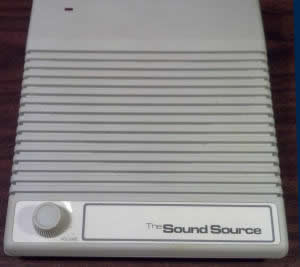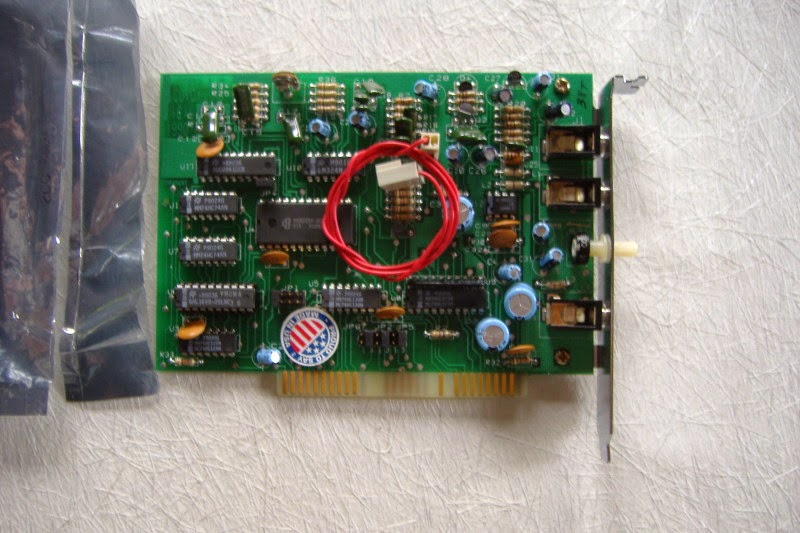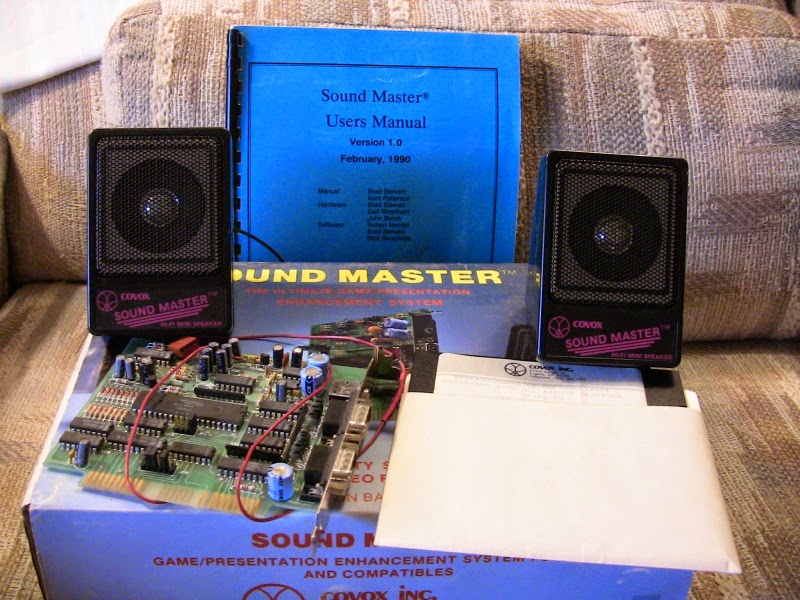 Covox / Disney
Covox / Disney
The Covox Speech Thing receives an 8-bit mono signal via the PC's parallel port, and produces an analogue output than can then be amplified and played through speakers. The sampling rate is not determined by the hardware (the PC software is responsible for sending bytes to the DAC at a given rate to allow for convincing digitised sound) so in theory Covox can support any sampling rate - only the speed of the parallel port limits this however to not even break the CD-quality 44100 kHz barrier. Also, given the fact that the PC was responsible for all the heavy lifting, performance can suffer.
The Covox card doesn't emulate any other formats, such as Ad Lib, Sound Blaster, etc. In a few games that support Disney Sound Source, your Covox can be detected as a Disney Sound Source so you can output sound to your Covox Speech Thing by selecting the 'Disney Sound Source' option. There are some key differences between the two though (more info further down).
If you have a sound card that supports Covox, for example, the Aztech 1st-generation cards, it's likely you need to disable your parallel port or move its address to something other than 378h for Covox emulation to work.
|
Disney Sound Source
|
|
|
Covox Sound Master + (1992)Introduced: 1992 A card that supports Speech Thing and Ad Lib audio. "Having recognised perhaps, that its Speech Thing was getting a little long in the tooth, and the most PC games players demand more sophisticated sound output, Covox has come up with the Soundmaster+. Unlike the Speech Thing, this is a card, although full marks to Covox for making it the most compact of those I've reviewed. It only requires an 8-bit slot and should be small enough to fit into many compact machines, as well as standard size desktops.
Like the Sound Blaster and Sound Galaxy [NX], Soundmaster+ supports two modes of sound generation, digitised sound and tone generation. Both of these modes emulate another sound device. Tone generation is compatible with the basic Ad Lib board. The digitised sound mode, however, emulates the Speech Thing. Covox claims that to emulate the Sound Blasters digitised output would have have a technological step backwards. That may well be, but in Europe at least, support for the Sound Blaster is far greater than it is for the Speech Thing." PC Review, November 1992
|
Covox Sound Master 2 (1992)Introduced: 1992 "The most expensive board in the Covox range is potentially one of the most exciting of the devices in its price range, but is let down by a couple of minor points. While it is essentially based on the Soundmaster+, including the Speech Thing and Ad Lib support, it boasts some impressive additional features.
Like the Sound Blaster and Sound Galaxy [NX], Sound Master II has a microphone input so that you can sample your own sounds, but it also has an alternative function. Soundmaster II emulates the Voice Recognition functions of the Covox Voice Master. This enables you to add voice commands to existing software, but, be warned, it takes some patience to get it set up exactly as you want it and working properly. The Soundmaster II also incorporates a MIDI interface and PC-Lyra music composition software. The Soundmaster II is sadly lacking joystick support and Sound Blaster emulation. With these two improvements and it's versatility it would have been an ideal first buy or upgrade." PC Review, November 1992
|



